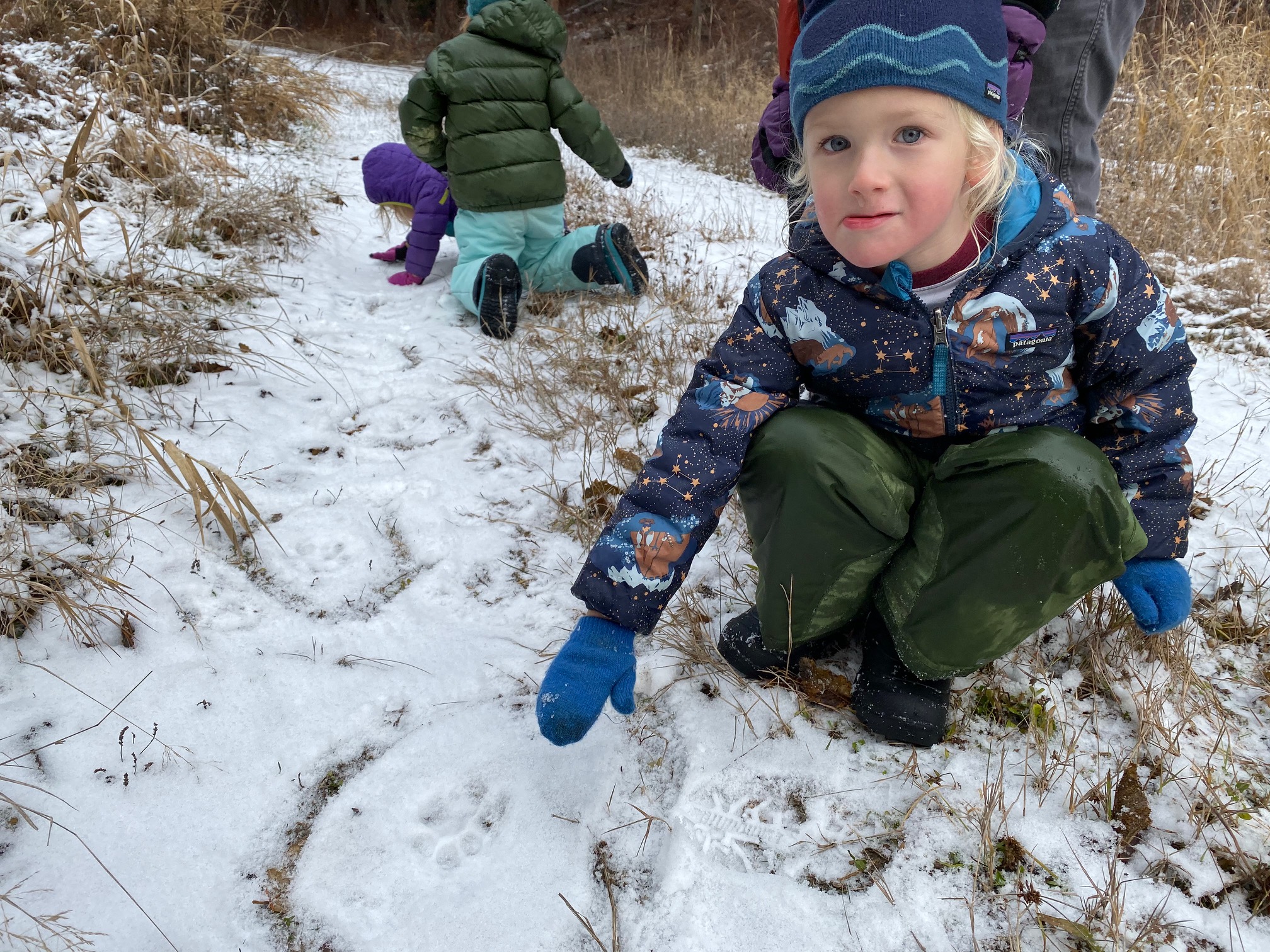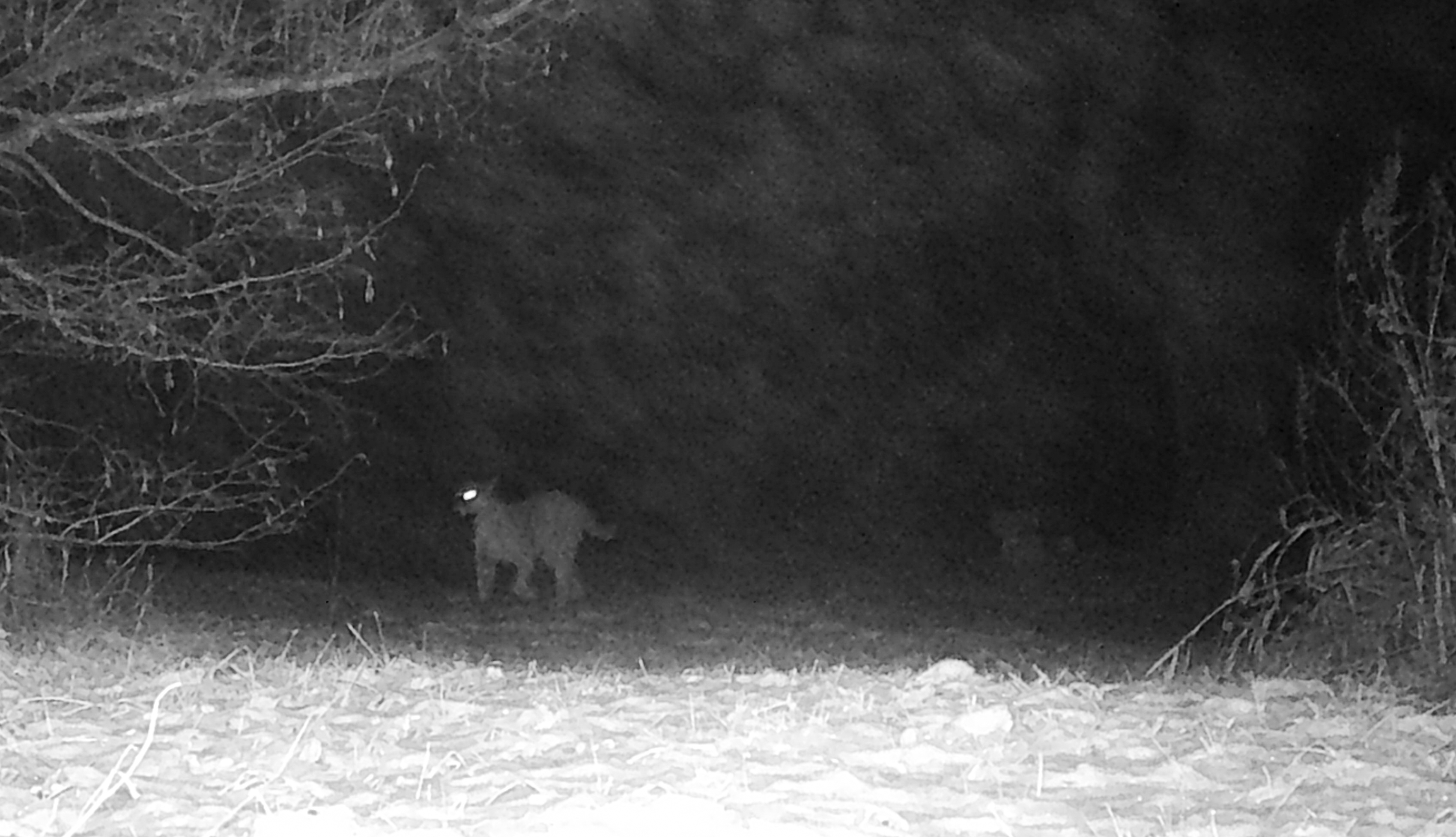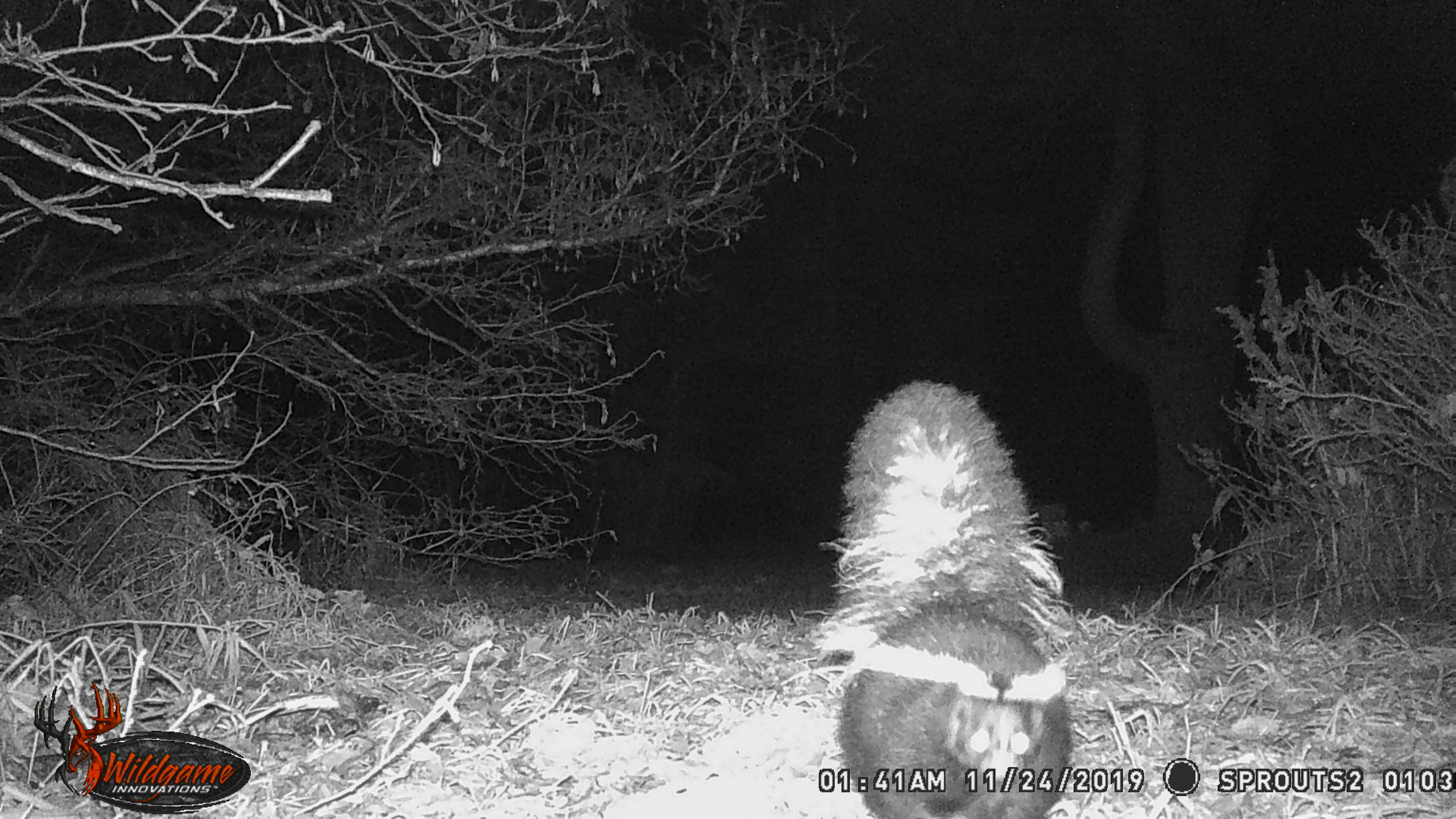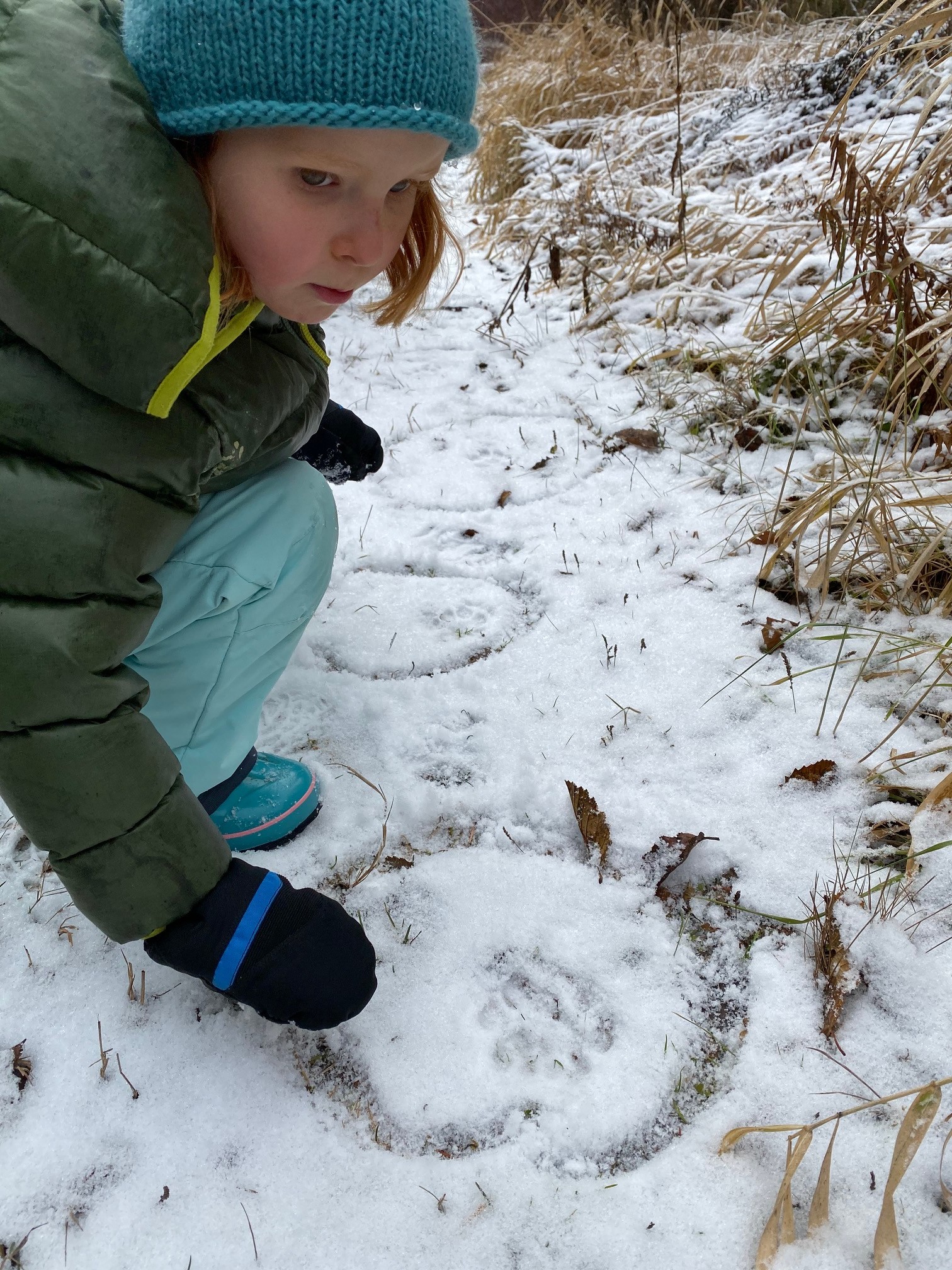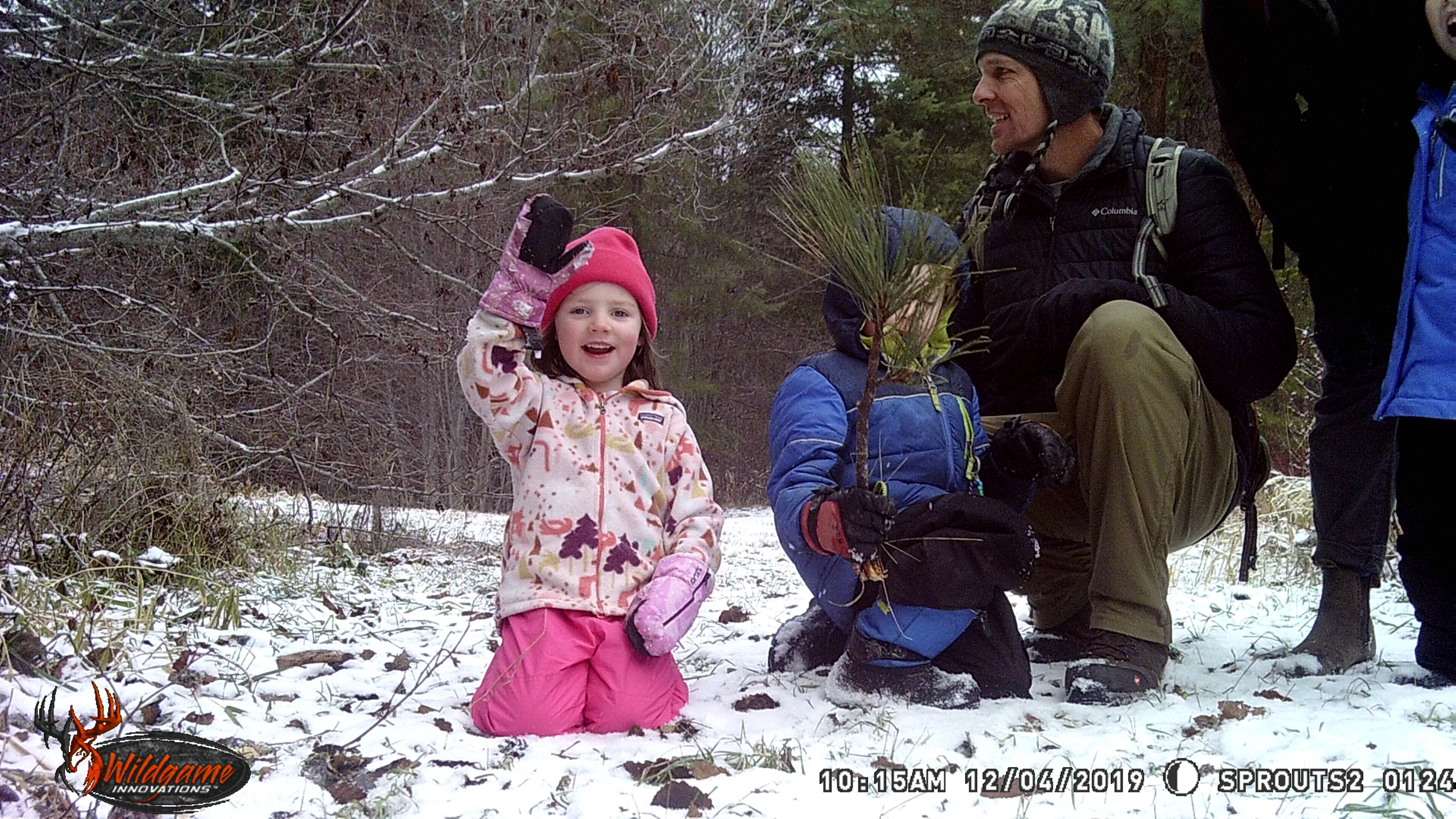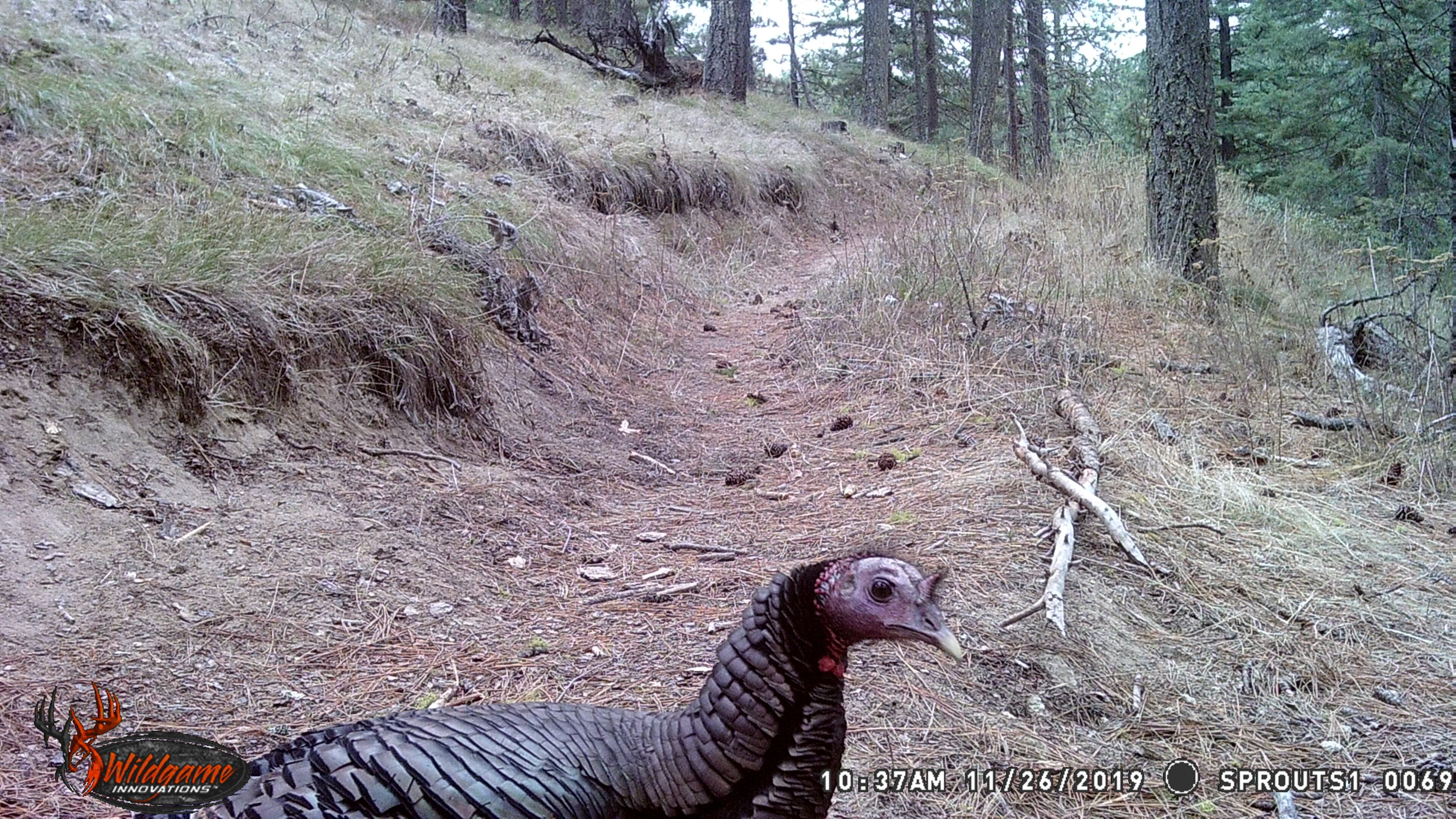The group of four and five-year-olds sat on the ground with their noses just inches from the snow. The temperature hovered in the 20’s but nobody seemed to care. Instead, everyone was intently focused on the paw prints leading across the field.
“I don’t see an X,” cried young Jules as he carefully studied the sign. “It’s a cat!” he declared with authority. Nearby, his friend Louise carefully drew circles around more marks that led up a dirt road.
We were hot on the trail of the bobcat that had visited our remote camera station, leaving behind a fuzzy image for us on the memory card. We had just finished checking the footage which rendered a pleasant surprise – this cat had wandered past just a few hours earlier, so the kids fanned out to pick up it’s track.
“Evidence” has been the word of the month for this group of preschoolers, and fresh bobcat tracks were exactly the kind of evidence that can ignite a passion for wild animals in young children.
The tracks soon traveled alongside a set of dog prints, so the kids learned how to tell the difference between K-9 and felines (toe claws with an X pattern in the paw = dog family. No claws and no X means it’s probably a cat).
The week-old snow had become a canvass of sorts. No longer just an open playfield to romp, it was telling the students what had traveled across this corner of campus. Squirrels were abundant. So were smaller mammals like mice and shrews, and for a while, we followed small prints with five distinct digits that were probably from a skunk. We also discovered a smaller set of bobcat tracks that crossed the first set.
I paused for a moment and smiled at the kids’ enthusiasm. “This is how you get them hooked on nature,” I thought to myself.
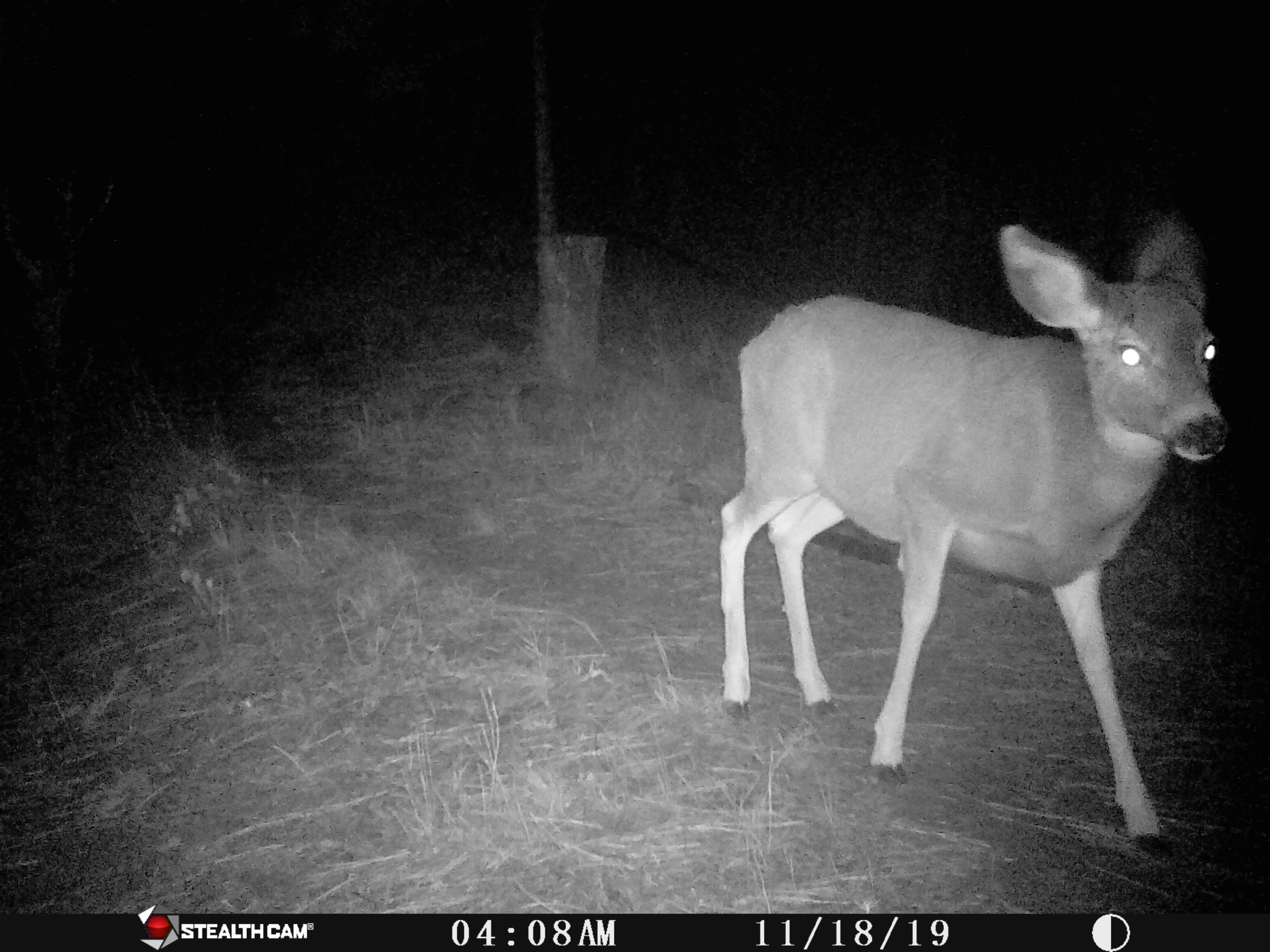 All of this began about two months earlier, when my wife and I started a camera trapping program at our son’s school – Mountain Sprouts is a (mostly) outdoor-based preschool near Leavenworth, WA.
All of this began about two months earlier, when my wife and I started a camera trapping program at our son’s school – Mountain Sprouts is a (mostly) outdoor-based preschool near Leavenworth, WA.
Parents are required to donate a few hours of time every month, so we devoted our volunteer hours to teaching the kids more about the natural world. Based on our experience at Osprey Acres, we knew that using remote trail cameras would be an excellent way to show them what animals were around the campus.

Back in the classroom, Jules, Trey, Sage, Ian, Jonny, Indi, Ainsley, and Lliam review camera footage on the laptop
We reached out to the online retailer TrailCamPro.com who agreed to sponsor the program with a few cameras and accessories (a huge thanks for their generosity). This week we checked our slate of cameras that had been soaking for a month in the field.
Kids were encouraged to guess which location would yield the best results, and the footage naturally sparked discussions about critters in our valley.
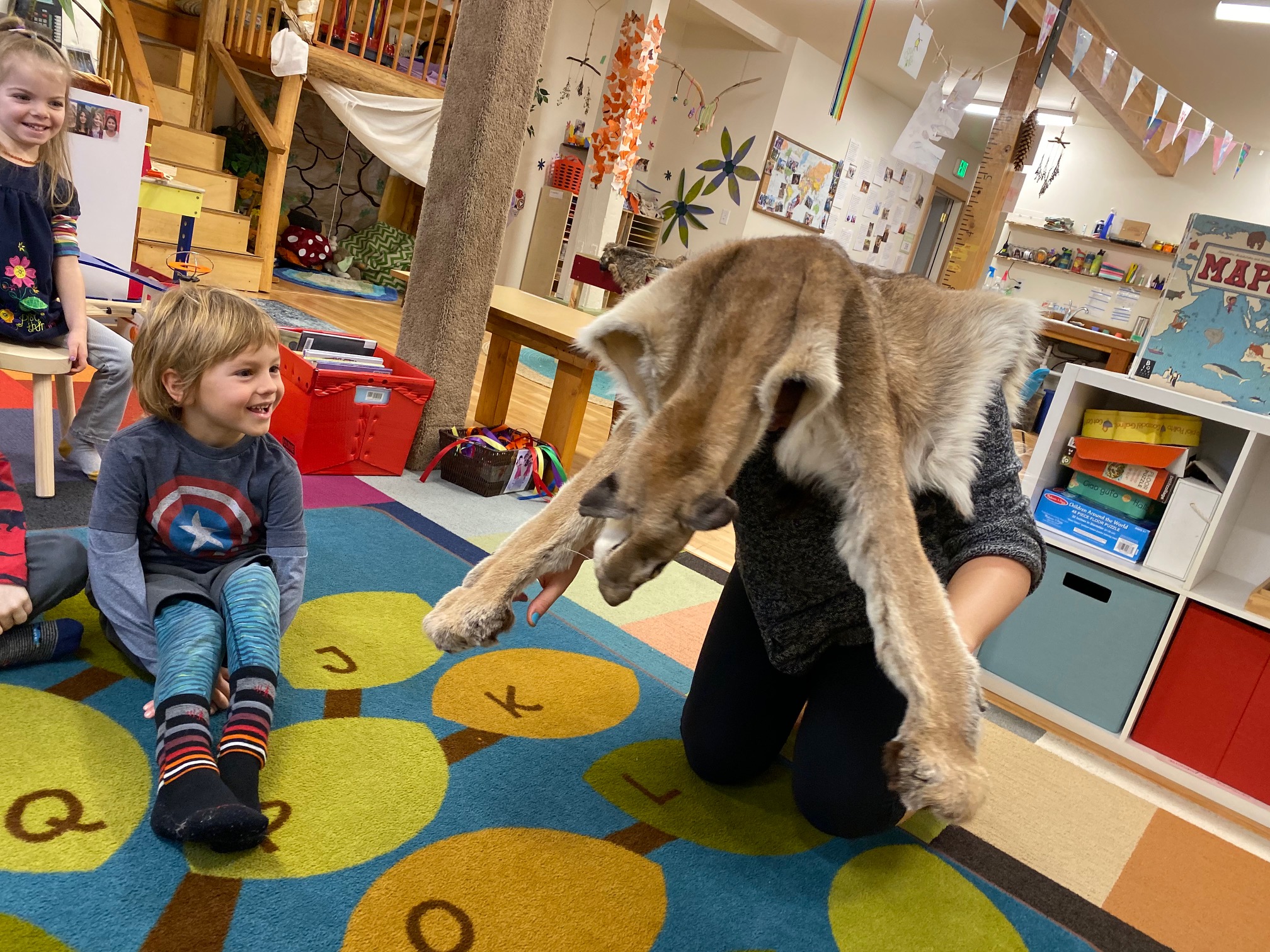
Teacher Hannah dons a cougar pelt on loan from the Forest Service to show the kids their actual size
In the classroom, we enjoyed a close up photo of a striped skunk (our valley is home to striped and spotted skunks the kids recalled). We practiced spraying like a skunk by balancing on our hands and lifting our legs in the air. We discussed the wolverine that was recently spotted in the region and how we could help scientists if we’re lucky enough to get one on camera.
This selfie generation doesn’t blink at cell phone photos, but put them near a game cam and they’ll delightedly act like their favorite animal. We deploy scent lure to draw animals close in for photos (“stinky stuff” the kids call it). They line up to sniff it, and squeal with a mixture of delight and horror at the stench.
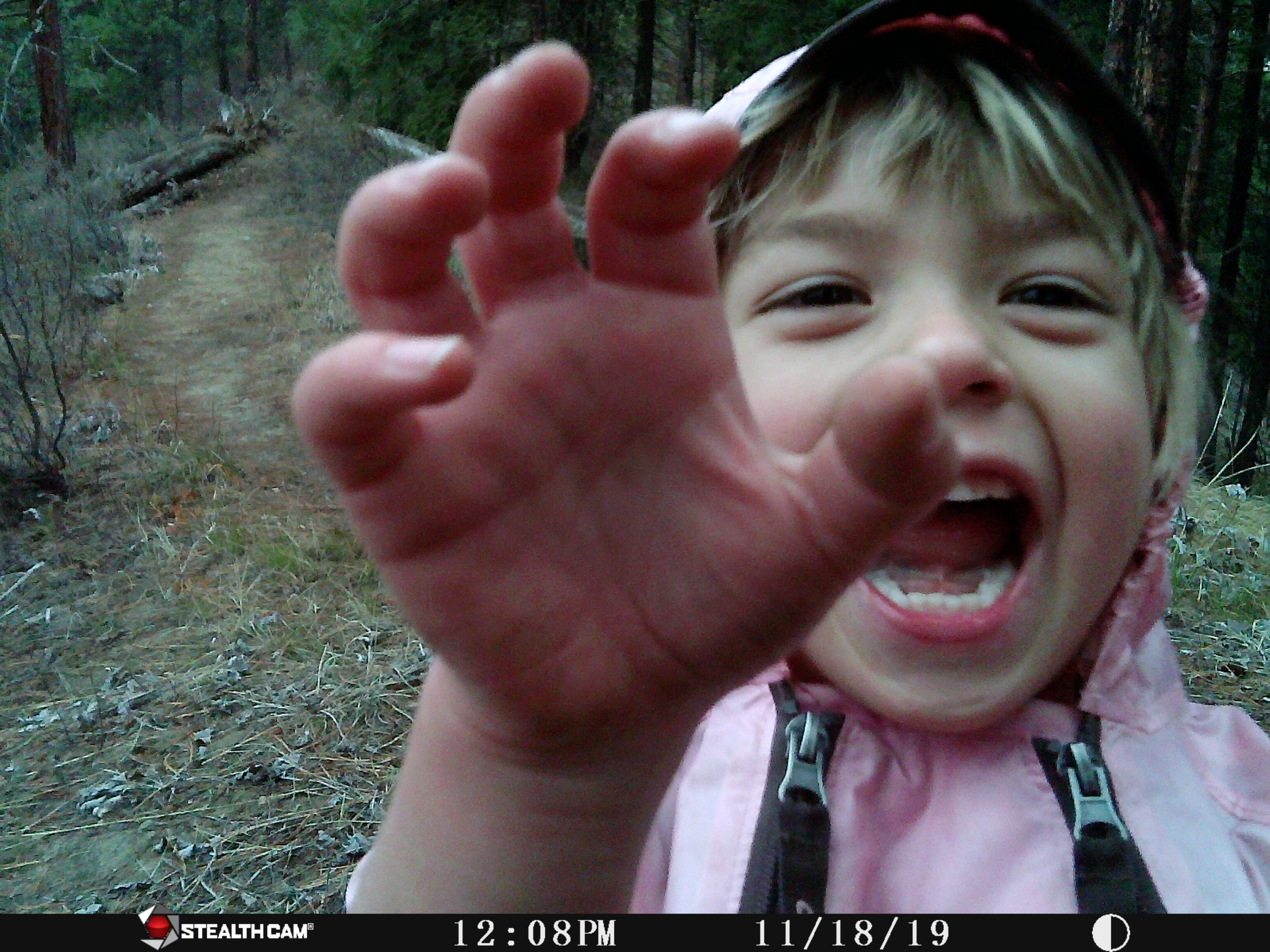
Levi does his best impression of a bear at one of our stations. The kids check the cameras during their walks to make sure the real bears haven’t destroyed them.
We plan to check our cameras once every month (come back for updates), but in the mean time, the teachers are using the camera trapping as a way to springboard into other nature-based curriculum.
While it’s still early, we’ve already documented coyotes, bobcat, skunk, turkey and plenty of deer. More importantly I can see the seeds that are being planted in a whole new cohort of young citizen scientists that live in our valley.
